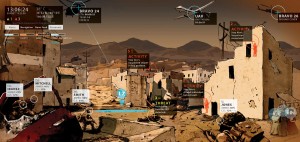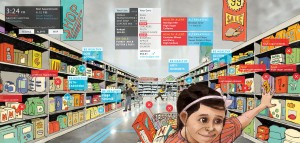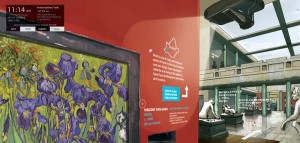- February 06, 2014
- By David Kohn
Amitabh Varshney dreams of sprinkling digital data like pixie dust throughout your daily life.
The director of the University of Maryland Institute for Advanced Computer Studies (UMIACS) and some of his colleagues have started work on an “augmentarium,” a project to devise new ways to add information onto what we see.
Most augmented reality systems under development use goggles to deliver digital data. The UMIACS team plans to develop goggle-based systems, but is focusing first on projectors to superimpose information directly onto the outside world; this will allow multiple users to simultaneously share the data via the naked eye.
One tool would allow surgeons to overlay X-rays and MRIs directly onto a patient’s body. Varshney is also working with astronomers and geographers to help them better visualize the fine details of large data sets. In addition, the technology could help soldiers process information from drones to determine where the enemy is hiding. Another app could streamline supermarket shopping, overlaying products with different colors to alert consumers about what they should or shouldn’t buy—useful to someone on a diet, or with peanut or gluten allergies.
With seed funding from the College of Computer, Mathematical, and Natural Sciences, the scientists are setting up a projection room for testing; they hope to begin experiments this summer. “What makes this so exciting,” Varshney says, “is that as we move forward, we will find more and more ways to use this technology.”
Click on the images below to see full visual representations of how this technology might work:



